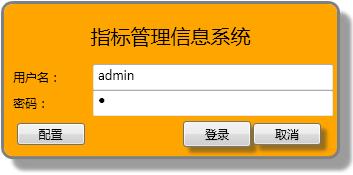
在《信息系統開發平台OpenExpressApp - 用戶權限模塊設計》中對RBAC以及在OEA中的涉及進行了簡要介紹,權限的基礎必須存在用戶,實現自定義用戶管理,CSLA已經提供一些類庫來繼承使用,本篇簡單的講解一下如何使用CSLA類庫實現用戶管理以及登錄,下一篇再介紹功能權限部分。
用戶管理模塊
這個其實就是一個用戶字典管理,包括用戶名、登錄名和密碼,沒有考慮證書等功能,由於目前實現比較簡單,User類庫編寫按照以往類庫就行了,這裡就不單獨講了。
實現用戶主體Principal
主體實現登錄和退出功能,登錄成功後返回用戶,否則為非法用戶。CSLA實現了一個類BusinessPrincipalBase,我們只要從它繼承下來就可以很方便的實現OEA的Principal對象,這個對象在登錄窗口時調用調用。
Principal代碼如下:
public class OEAPrincipal : BusinessPrincipalBase
{
private OEAPrincipal(IIdentity identity)
: base(identity)
{ }
public static bool Login(string username, string password)
{
var identity = OEAIdentity.GetIdentity(username, password);
if (identity.IsAuthenticated)
{
OEAPrincipal principal = new OEAPrincipal(identity);
Csla.ApplicationContext.User = principal;
return true;
}
else
{
Csla.ApplicationContext.User = new UnauthenticatedPrincipal();
return false;
}
}
public static void Logout()
{
Csla.ApplicationContext.User = new UnauthenticatedPrincipal();
實現用戶標識Identity
通過用戶名和密碼去服務器端查詢後返回用戶標識對象,在這裡會把角色也返回過來,角色部分功能權限blog中再介紹。
/// <summary>
/// 注意:防止重名,User增加Code區分唯一性,查詢時通過Code查詢,同時返回Code和Name
/// </summary>
[Serializable()]
public class OEAIdentity : CslaIdentity
{
#region Factory Methods
internal static OEAIdentity GetIdentity(string username, string password)
{
return DataPortal.Fetch<OEAIdentity>(new UsernameCriteria(username, password));
}
public User User { get; set; }
private OEAIdentity()
{ /* require use of factory methods */ }
#endregion
#region Data Access
public new OrgPositions Roles { get; private set; }
private void DataPortal_Fetch(UsernameCriteria criteria)
{
User = UserList.Get(criteria.Username, criteria.Password);
if (null != User)
{
base.Name = User.Name;
base.IsAuthenticated = true;
this.Roles = OrgPositions.GetList(User.Id); // list of roles from security store
}
else
{
base.Name = string.Empty;
base.IsAuthenticated = false;
this.Roles = null;
}
}
#endregion
}